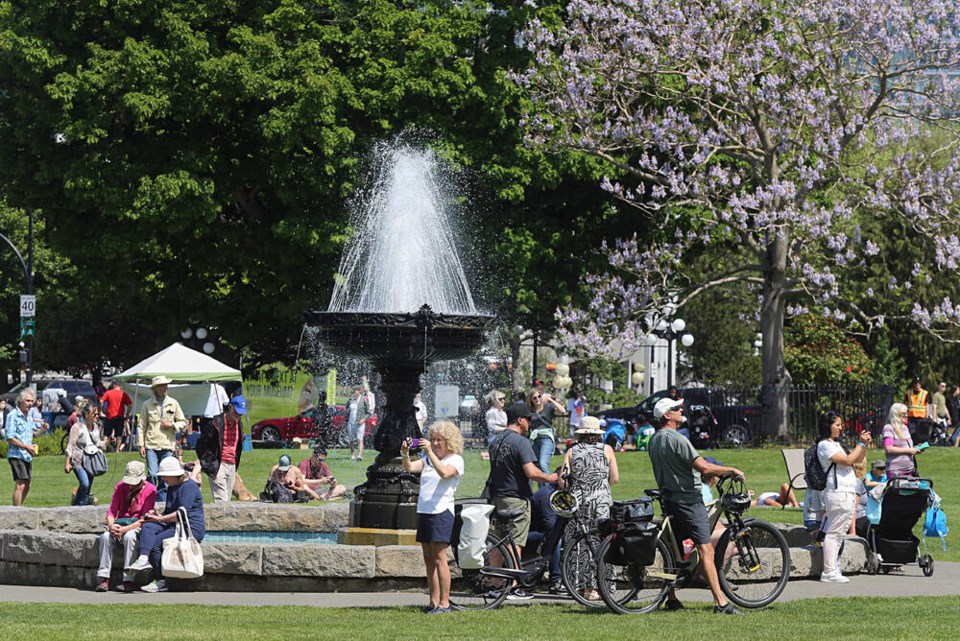Environment and Climate Change Canada is forecasting above-average temperatures and dry conditions this summer for most of B.C.
For southeast Vancouver Island and Metro Vancouver, there’s about an 80 to 90 per cent chance temperatures will be above normal in June, July and August, while there’s 100 per cent certainty much of the B.C. Interior will be hotter than usual, according to the federal weather agency’s seasonal outlook.
Victoria has an 89 per cent probability of above normal temperatures, a nine per cent probability of normal, and one per cent chance of below normal.
For western and northern Vancouver Island, the probability of above normal is about 50 to 65 per cent
The seasonal forecast does not predict whether there will be heat waves but Ken Dosanjh, a meteorologist with Environment and Climate Change Canada, said B.C. residents should prepare for the possibility.
“With these predictions, it’s probably a good idea for the public to be proactive and prepare for ways to stay cool and stay hydrated this summer,” he said.
This includes installing air conditioning or fans, or figuring out where the closest library or recreation centre is with AC.
Dosanjh said May was warmer and drier than average. And, he said June could also be drier than normal with the first two weeks looking clear and sunny, with temperatures 5 to 10 C hotter than normal during the day.
“Looking at June, July, and August, we are expecting a higher probability of above normal temperatures for pretty much most of British Columbia,” he said.
“We are also in for drier conditions, which poses risks for droughts and fires.”
He could not say whether the possibility of an El Niño would push those temperatures even more.
Last month, the World Meteorological Organization warned that many parts of the world face potential heat records because the chance of an El Niño weather pattern developing this summer has increased.
It’s now estimated there’s a 60 per cent chance that El Niño will develop by the end of July, and an 80 per cent chance it will by the end of September, according to the WMO.
The concern is that a strong El Niño could create what the WMO calls a “double whammy,” where the ocean-warming phenomenon is combined with human-induced warming from greenhouse gases. This happened in 2016, which was globally the warmest year on record.
In B.C., past El Niño events, like the one in 2016, have contributed to heat waves and more intense wildfires, said Dylan Clark, associate director of research and operations at the Pacific Institute for Climate Solutions at the University of Victoria.
He said an El Niño summer doesn’t necessarily mean that B.C. will see a disaster as deadly as the 2021 heat dome, but it does mean that governments should prepare now for the possibility.
Wildfire is in steep terrain visible from Highway 4 at Cameron Lake.



